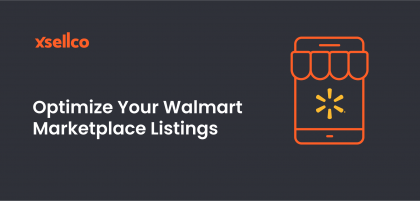Customer experience surveys are a vital part of every business strategy, intended to provide valuable feedback for e-commerce businesses, but difficult to master.
The trick to customer experience surveys and getting people to actually fill them out is to know their purpose, vary the question types, ask questions clearly and consistently, automate wherever possible and offer an incentive.
What do you want to learn?
What sparked wanting to make a customer experience survey in the first place?
E-commerce brands like Amazon, eBay, and Jet.com cover wide ranges of products, attracting all kinds of customers. In order to offer a more personalized customer experience, these brands keep their surveys specific to either the product a customer bought or related to their purchase history.
If you want to learn more about yoga mats, don’t give customers a survey that covers books, home goods and appliances. There’s no way a customer will actually follow through if they don’t feel like the survey will actually help future experiences.
Here’s a quick example from Amazon:

On the surface, it doesn’t seem like a lot is going on here but in this case, it’s a good thing. The customer can rate the seller, answer a simple yes or no question about the product and leave a comment. This leads to the next major tip for creating a customer experience survey.
Use different kinds of questions
As often as we’re told to not judge a book by its cover, we’re all secretly assessing customer experience surveys by the types of questions they’re asking. Customers don’t have a lot of time to do these surveys, so if they actually decide they want to do this, it should look good as well as be relevant to their interests.
In the above example from Amazon, there’s an open-ended question, a yes or no question and a rating system—all of which are useful for large e-commerce brands.
If it was just one or multiple open-ended questions, that could be a turn-off because the customer might prefer another method of answering questions or the one question being asked isn’t enough to cover the specific problem.
Use multiple-choice or open-ended questions, true or false, yes or no, rating systems or polls to not only make your survey more visually appealing but also to give your business the opportunity to ask all kinds of questions that can give it valuable customer insights.
Keep it simple
We all live busy lives. There’s simply not enough time in the day to sit down for more than 10 minutes to fill out a survey for an e-commerce brand.
Think about how long you would like to spend taking a survey after buying or receiving a product. Can you picture yourself sitting down for more than five minutes?
If the nature of your product or services requires the customer to stick around for any longer, be open about it. Let them know what they’re getting into so they don’t stop in the middle.
Another thing to keep in mind is to make sure that all questions aren’t open-ended. Each question should be easy to read and to respond to. It shouldn’t require that much thought or make the customer feel like they’re back in school taking a test they didn’t study for.
Amazon can’t have large surveys due to its large customer base. The amount of data gathered would end up being counterproductive because no one would know what to do with it all.
Automate wherever possible
One thing that can be automated is the sending of the survey. With the aid of software, e-commerce brands can set triggers so that customers receive a survey once a certain amount of time has passed after their purchase.
This is important for large brands such as Amazon because there’s not enough time or manpower in the world to manually send a personalized survey to everyone who purchases anything.
Another necessary task that can be automated is the collection and organization of data gathered from the customer experience survey. Ask for the customer’s contact information so it can be uploaded automatically to whatever software you use to manage data.
When the organization of customer data and even feedback is prioritized, e-commerce brands can discover interesting details about their customers. Here’s an example from a study that Shopify conducted on its own base:

Data as simple as this can help e-commerce brands segment their customers and offer them more targeted services and products.
Offer an incentive
When all is said and done, give your customers something to show how much you appreciate them taking the time to fill out the survey. The last thing I’d want is for a business to say that they really appreciate my feedback without actually giving anything back.
Some places offer coupons, others give free products or services. Whatever your business decides to do, make sure it’s meaningful. Based on my personal experiences with e-commerce brands, when they offer something in return, I would go out of my way to tell other people to complete the customer experience survey, too.
Don’t just send your cheapest products either. Make it related to his or her interests. If they buy a book, offer a free one with their next order. Amazon offers a program called Amazon Incentives where customers can take surveys in exchange for gift cards.
The final word
Customer experience surveys for e-commerce brands are a great way for businesses to connect with customers they’ll most likely never see. It’s easy to ignore the shopper when there’s no brick-and-mortar store, where face-to-face interactions are the norm, but that doesn’t mean feedback is no longer useful.
The feedback obtained through simple and creative surveys can make such a big difference. Customers, when given a reason to fill out the survey, appreciate having their voices heard. Use this to your advantage and your e-commerce brand should see immediate results.








